The new Explorer camper truck from German RV startup Auriga looks almost as fast and ferocious as an all-out Dakar rally rig. But while it can certainly rip down dirt roads with dust-spewing aplomb, it's really optimized for slower, more meticulous recreational travel, the kind where you link together lazy days of destination-less discovery with cozy nights around the fire. When the sun starts to hang low, the Explorer transforms into a roomy four-person lodge by way of a pop-up roof and three individual slide-outs, all activated at the push of a button.
Founded in 2023, Auriga has set out to create the ideal overland camper truck, one that drives small and agile on cramped, overgrown trails but lives extra large at camp. It's spared no innovation doing so, installing a variety of clever solutions and transformational features to maximize space for the most comfortable living at what might otherwise be the least comfortable spaces on Earth.
"We don't just build vehicles, we create the basis for unforgettable adventures on and off the beaten track," sums up Auriga managing director and design engineer Frank Haltermann. "With Auriga Explorer, we combine the best of two worlds: the freedom of a compact four-wheel drive pickup truck and the comfort of a luxurious expedition vehicle."
Auriga has built its pre-production prototype on a Ford Ranger and also advertises the Volkswagen Amarok as a second base chassis option. Assuming it's working with newer truck chassis only, those two make sense as a pairing since they're now badge-engineered versions of the same chassis, much like the VW Transporter and Ford Transit Custom over on the camper van side.

Auriga chooses a Ford Ranger Single Cab for the honor of carrying its first production-ready camper module, keeping overall vehicle length down to 585 cm (230 in). That's not quite classic Toyota Chinook tiny (518 cm/204 in), and it's also over a foot longer than the old 550-cm (216-in) Toyota Sunrader 4x4, but it's shorter than the average contemporary Sprinter camper van and well shorter than the 670-cm+ (264-in) Truckhouse BCT, a modern-day Sunrader redux.
Not only is the Explorer compact, it features a sportier overall camper design than the average camper truck. Auriga gives its module a form that really grab one's attention with distinctive elements you don't see often, if at all. Perhaps the most conspicuous of those features, the spare tire drops down from its usual spot clinging to the rear camper wall to the rear side corner, nested inside the bodywork. In fact, it's joined by a second full-size spare on the opposite side, connected connected together by a sharp-cut, departure angle-boosting underbody.
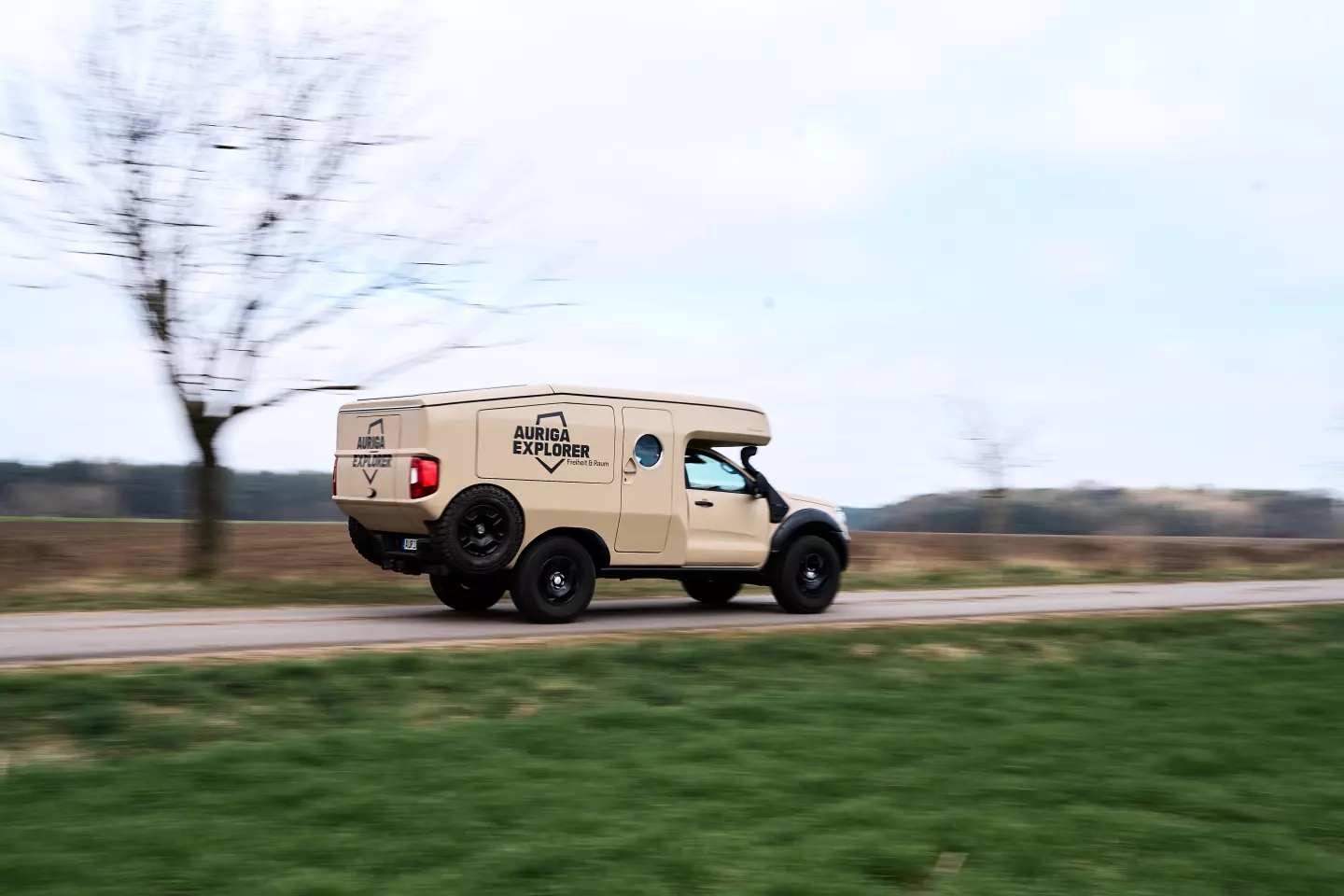
Up top, the gently sloped roofline over the rear quarter gives the rig a slightly sportier, swept-back profile, sidestepping the usual big box-behind-truck cab configuration. The sculpted sides and beveled edges of the fiberglass camper further add to the not-quite-a-box form, giving the rig the feel of a more cohesive singular vehicle, brought home by the matching beige paint.
Auriga's home page (and the video down below) shows the Explorer camper sprinting down a dirt road and disappearing beyond a cloud of dust of its own making, and it looks perfectly natural doing so. Most other camper trucks we can think of would look out of place pushing toward top speed, but the Explorer looks made for the purpose.
As for the interior, it's still a work in progress. Auriga has detailed its planned layout, though, which relies on module expansion, sliding components and transforming spaces to make the most of every square centimeter of floor area.
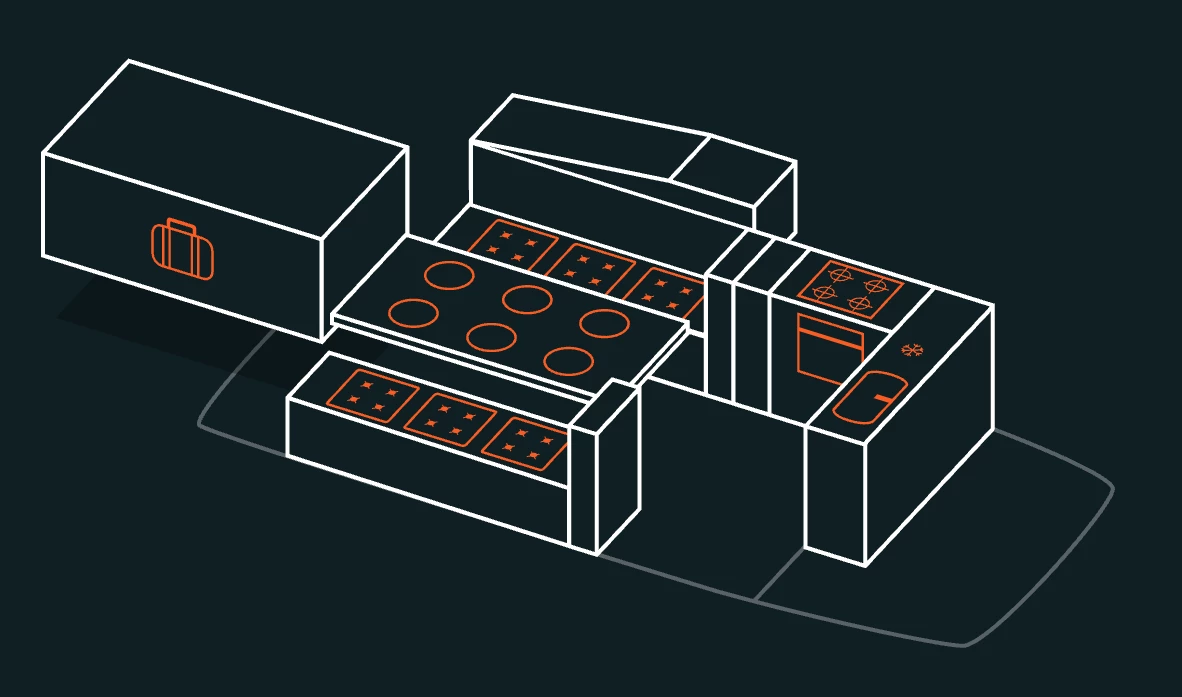
The unit opens with an electro-pneumatic actuation system that lifts the two-panel pop-up roof and deploys the slide-out expansions on the left, right and rear walls. As opposed to similar expansions we've seen housing the bed, Auriga's rear slide-out serves as the gear garage, allowing campers to load it up with sports gear, camping provisions and tools. It slides out of the way at camp to free up interior space, allowing for easy outdoor access to all that gear through two side hatches. Close and lock those hatches at night, and all your gear remains secure.
Similarly, the left- and right-side slide-outs house independent cupboards for storing clothes, towels and other everyday overland travel necessities. A taller wardrobe separating the front kitchen from the dinette provides space for hanging jackets, shirts and more.
With the garage launched out the back and cupboards out the sides, the rear-central floor area serves to house a full-width dining lounge for four to six people. Its central table runs longitudinally between benches on either side and lowers down to bench level at night to create the foundation of the 150 x 200-cm (59 x 79-in) transverse queen bed.
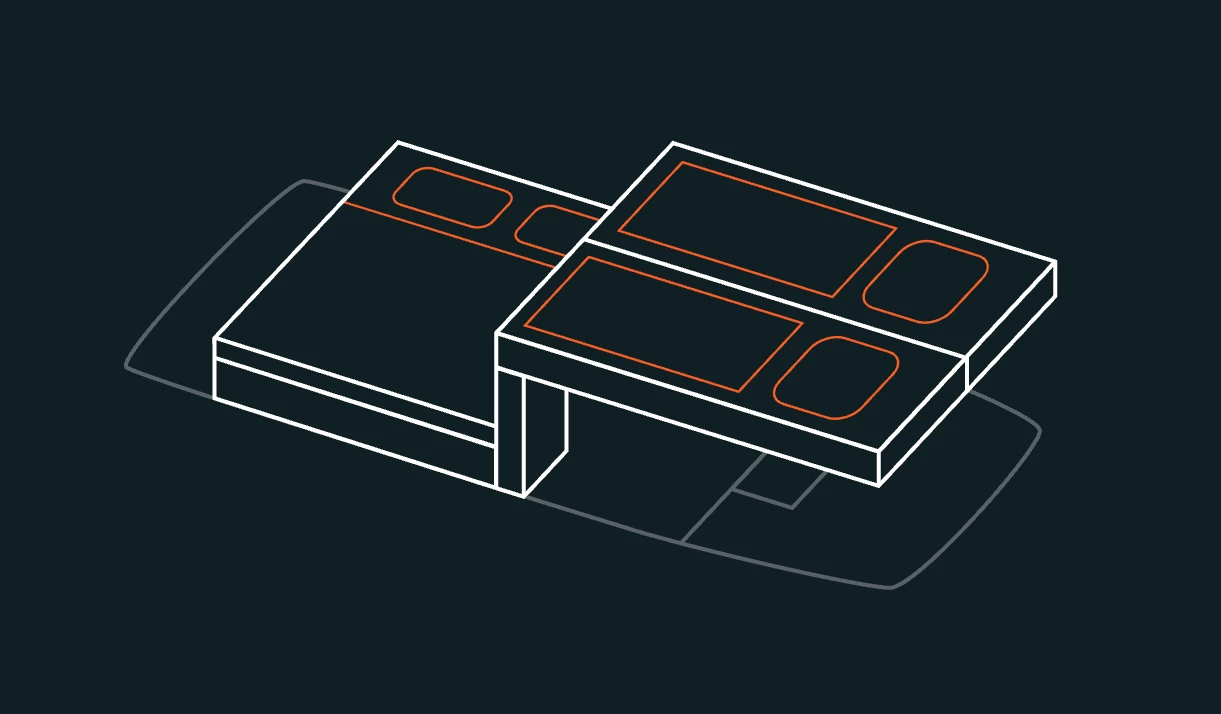
The "master bedroom" is located up in the alcove area, providing a 200 x 180-cm (79 x 71-in) longitudinal mattress on a Froli spring platform. Rather than tilting up to the rooftop as one double, the master bed is split into two single beds that fold upward individually. This way, the first person awake can lift their bed and enjoy added headroom below without waking the other. It appears the early riser can sleep on the driver's side to lift their bed away for access to the kitchen or on the passenger side for access to the bathroom. The Explorer has up to 205 cm (6.7 feet) of standing height.
The L-shaped kitchen is tucked into the driver-side front corner of the Explorer floor, offering a diesel range with four-burner stove and oven, a compressor refrigerator and a sink.
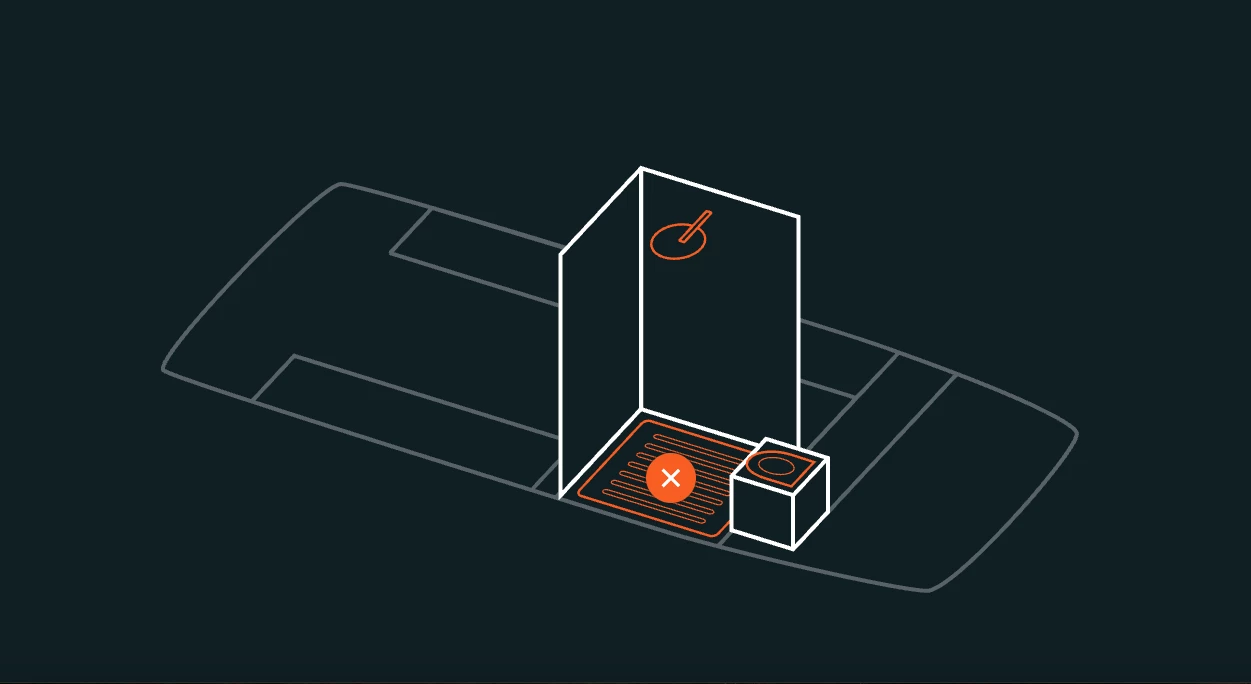
And, yes! There is more of a bathroom than just a portable toilet box stashed away under a bench ... at least when you need it. The part-time bathroom compartment uses a pair of fold-out walls to turn the front corner just inside the entry door into a private room. Here, campers will find a pullout dry separating toilet and an indoor shower with a recirculation system for conserving water. The Explorer also includes an outdoor shower hookup.
Auriga notes it plans to install underfloor heating and an electrical system with solar charging. It says the full Explorer camper truck will weigh in under 3,500 kg (7,716 lb).
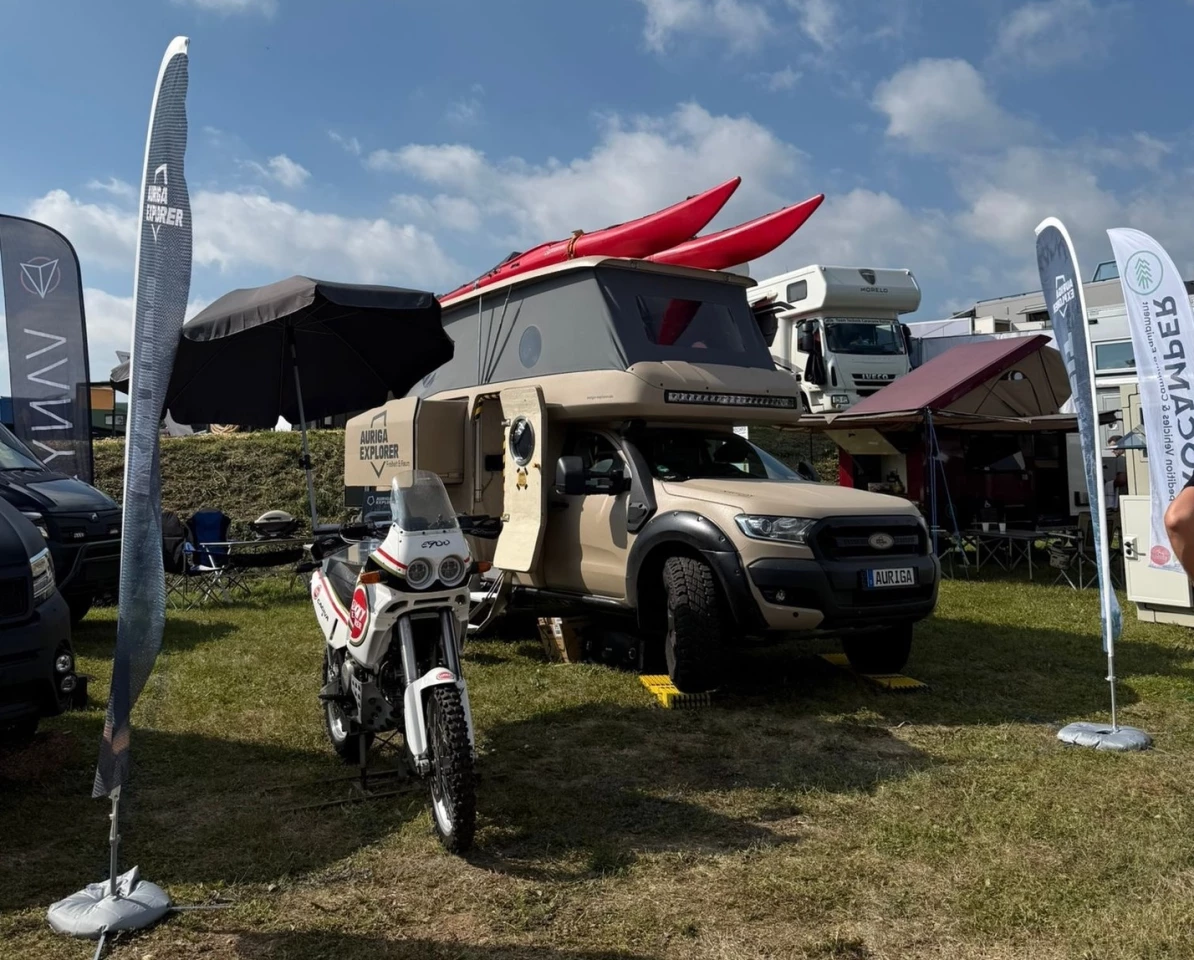
After completing prototype testing, Auriga put together its first production-ready Explorer truck and spent much of Summer 2025 showing it at overland shows around Germany. It plans to begin production before the end of 2025, manufacturing each Explorer camper and assembling complete trucks in Germany. With a height of 2.25 m (7.4 feet) and width of 2.1 m (6.9 feet) to go along with the 5.9-m (19.4-foot) length, the truck is sized to fit into a standard shipping container.
Auriga has not yet published a detailed spec sheet and did not respond to our emails requesting pricing. We hope to get more of that information, along with photos of the finished interior, once production gets underway.
In the meantime, you can watch what the Explorer can do in the quick clip below.
Source: Auriga












